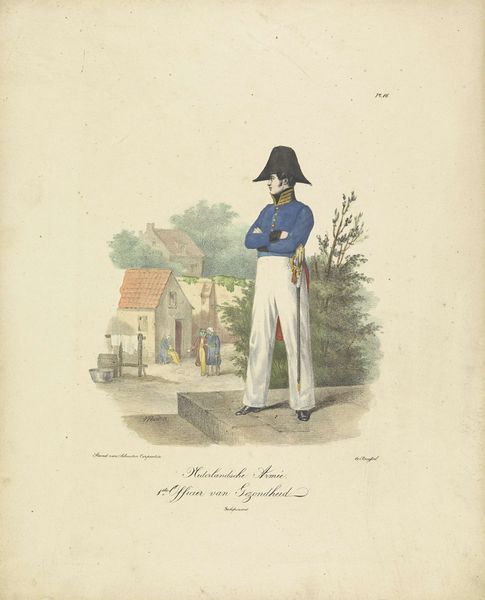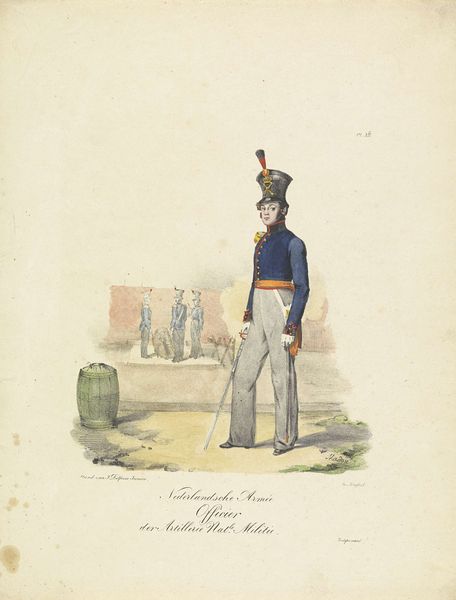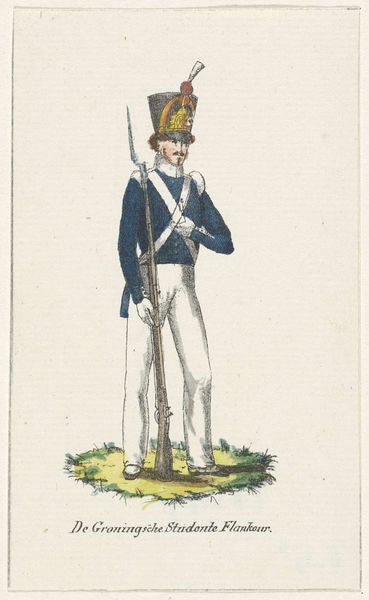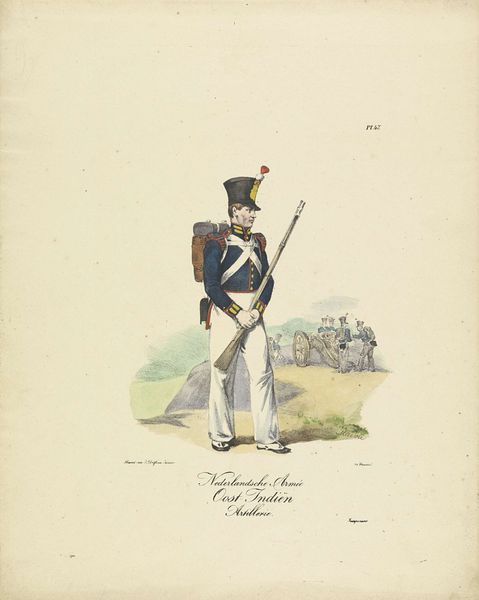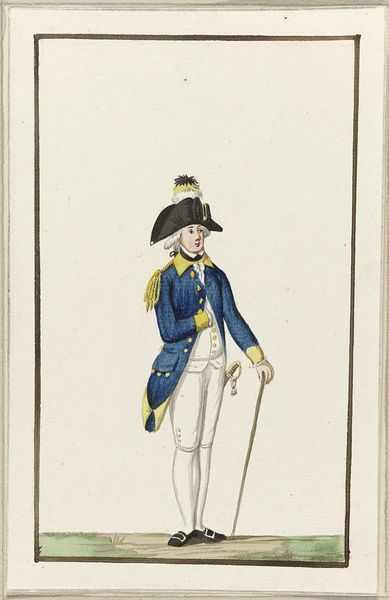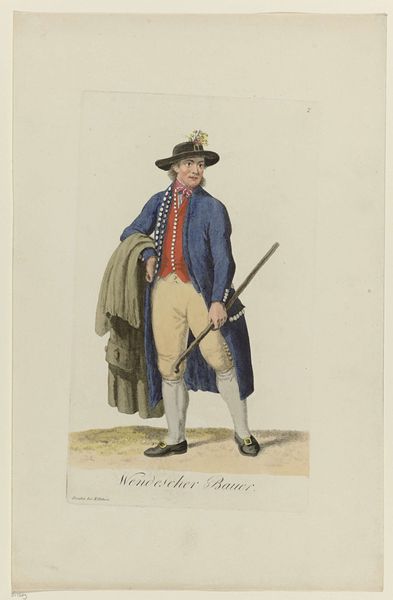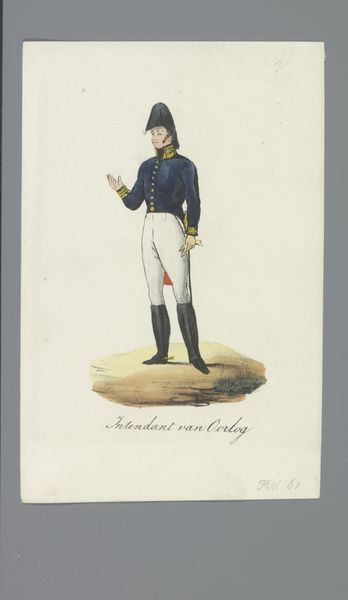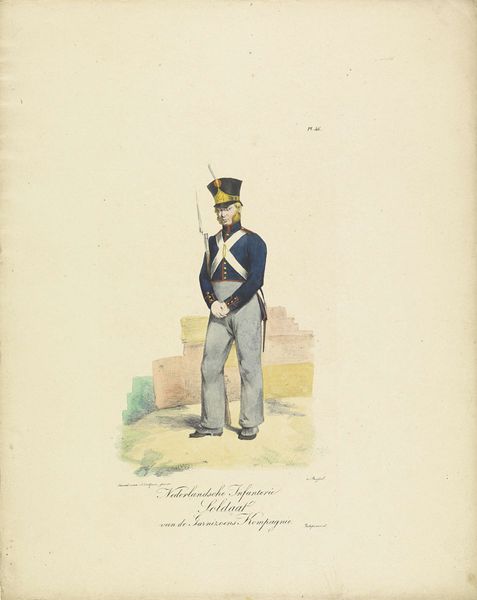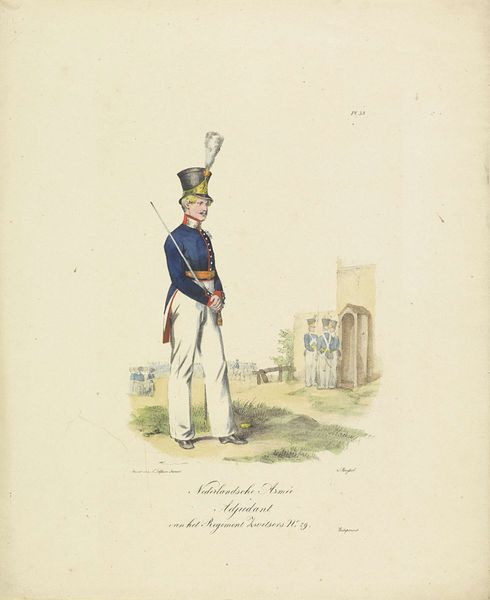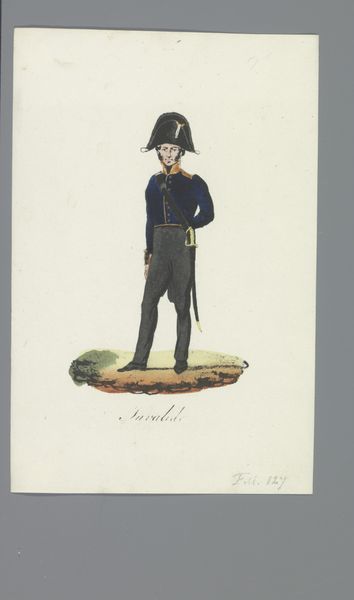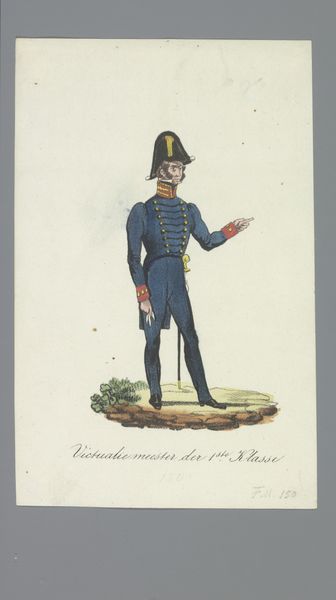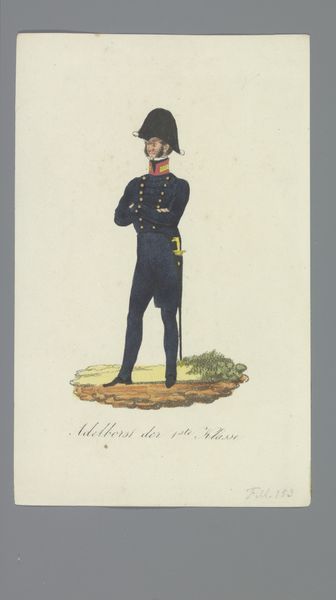
drawing, watercolor
#
portrait
#
drawing
#
watercolor
#
romanticism
#
watercolour illustration
#
genre-painting
#
watercolor
Dimensions: height 362 mm, width 295 mm
Copyright: Rijks Museum: Open Domain
Editor: We're looking at "Agent van het Departement van Oorlog, 1820-1825," a watercolor and drawing work by Jean-Baptiste Madou, dating from between 1825 and 1827. The figure seems a bit isolated. What stands out to you about it? Curator: Formally, I'm immediately struck by the contrast. Observe how the artist sets the vibrant blues and gold of the agent's uniform against the muted backdrop. The crisp lines defining his figure sharply juxtapose with the softer washes used to render the landscape. Note also how the picture plane is subtly divided – the agent occupies the foreground while the building is nestled far away in the back, which sets up an intriguing tension between subject and setting, doesn’t it? Editor: It does. It almost feels like a stage setting. Is there something about his stance that suggests that tension, or maybe about the colour usage? Curator: Precisely. Consider the precise rendering of details on the uniform. Every button, every braid is meticulously defined. This meticulousness extends even to the agent's expression, yet it remains strangely unreadable. What does it convey when it doesn’t connect with us? Now compare this with the vaguer handling of the background building and nature. Do you think this calculated disparity is incidental, or does it lead us somewhere in thinking about the picture's intention? Editor: I hadn't thought about it that way. The contrast between precision and ambiguity highlights the agent’s sense of controlled duty, or at least presents an ideal of military presence. The backdrop almost doesn’t matter… he *is* the point. Curator: Indeed. The painting functions as a meditation on the structure and details within itself. By engaging the formal structure of the image we get a far deeper appreciation. Editor: Thanks, that helps me view the work more analytically. Curator: My pleasure. It's through this focused seeing that we come to better appreciate the object’s function.
Comments
No comments
Be the first to comment and join the conversation on the ultimate creative platform.
